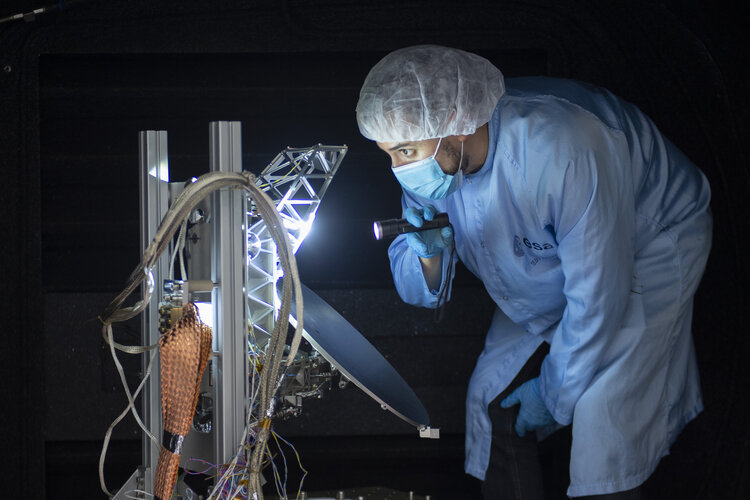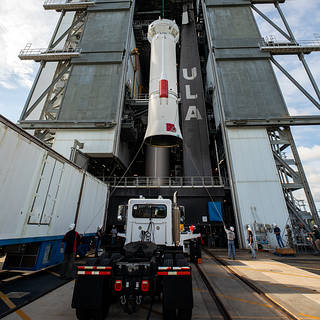
Copernical Team
Recreating "real food meals" as small cubes that taste like candy
 According to "The State of Food Security and Nutrition in the World," approximately 811 million people around the world were undernourished in 2020. Although proper nutrition is the cornerstone of good health, it is something many people still do not have access to. To help overcome this global challenge, MealCubes recreate the world's healthiest meals in the convenience of a few tasty candies t
According to "The State of Food Security and Nutrition in the World," approximately 811 million people around the world were undernourished in 2020. Although proper nutrition is the cornerstone of good health, it is something many people still do not have access to. To help overcome this global challenge, MealCubes recreate the world's healthiest meals in the convenience of a few tasty candies t Space Force upskilling Guardians with process mapping and automation
 The Space Force held its first Robotic Process Automation Workshop to explore how to effectively leverage bots to execute repetitive processes, as part of efforts to modernize the world-class fighting force at the speed of relevance. Permanent staff from the U.S. Space Force Space Operations Command, Headquarters U.S. Space Force, Air Force Personnel Center, and Air Force Reserve Personnel Cente
The Space Force held its first Robotic Process Automation Workshop to explore how to effectively leverage bots to execute repetitive processes, as part of efforts to modernize the world-class fighting force at the speed of relevance. Permanent staff from the U.S. Space Force Space Operations Command, Headquarters U.S. Space Force, Air Force Personnel Center, and Air Force Reserve Personnel Cente Virgin Galactic cleared to launch after US closes safety probe
 Virgin Galactic said Wednesday it had been cleared for spaceflight after the Federal Aviation Agency (FAA) concluded a probe into a safety "mishap" related to its high-profile mission in July that featured company founder Richard Branson.
The FAA told the company it had accepted its proposed corrective actions related to the flight, which saw the SpaceShipTwo vehicle drop below its assigned
Virgin Galactic said Wednesday it had been cleared for spaceflight after the Federal Aviation Agency (FAA) concluded a probe into a safety "mishap" related to its high-profile mission in July that featured company founder Richard Branson.
The FAA told the company it had accepted its proposed corrective actions related to the flight, which saw the SpaceShipTwo vehicle drop below its assigned ESA Open Day on our Web TV

ESA Web TV is offering live coverage of events across ESA establishments during Sunday afternoon’s ESA Open Day.
Cosmic kit
 Image:
ESA astronaut Matthias Maurer wearing the SpaceX spacesuit
Image:
ESA astronaut Matthias Maurer wearing the SpaceX spacesuit Aerosols released from Australian bushfires triggers algal blooms

Australia’s deadly bushfires in the 2019-2020 season generated 700 million tonnes of carbon dioxide in the atmosphere – triggering vast algal blooms in the Southern Ocean. Using satellite data, two new studies published in Nature prove how satellites can illuminate the complicated ways in which Earth is responding to climate change in an era of worsening wildfires.
Virgin Galactic says FAA has cleared it for further flights

The spectrum of gravitational waves
 Image:
Image:
Gravitational waves are ripples in spacetime produced by the acceleration of very massive objects, such as black holes coming together and merging. Different objects in space produce gravitational waves of different timescales, ranging from milliseconds to billions of years. Some of these waves can only be observed from space.
This is the goal of ESA’s future mission LISA, which will be the first space-based gravitational wave observatory.
LISA will study gravitational waves that are produced by merging stellar mass black holes, supermassive black holes and white dwarfs. It will also pick up the waves produced by compact objects, like neutron stars
FAA again delays final decision on Georgia spaceport permit

NASA’s Lucy Mission Prepares for Launch to Trojan Asteroids
 NASA has tested the functions of Lucy, the agency’s first spacecraft to study Jupiter’s Trojan asteroids, filled it with fuel, and is preparing to pack it into a capsule for launch Saturday, Oct. 16.
NASA has tested the functions of Lucy, the agency’s first spacecraft to study Jupiter’s Trojan asteroids, filled it with fuel, and is preparing to pack it into a capsule for launch Saturday, Oct. 16. 
